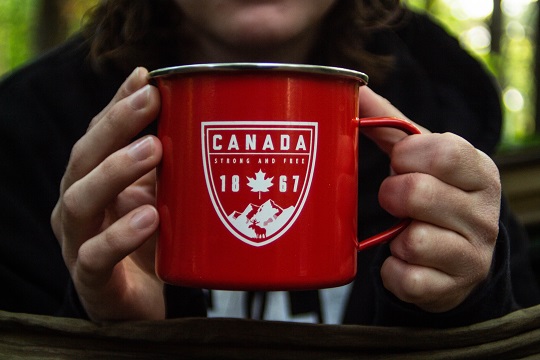
Certificates of origin (COs) are legal documents that declare the origin of a product. When you export goods to an overseas customer, you must include a certificate of origin with your shipment. The local customs authorities use the certificate to determine the tariffs—if any—that your customer has to pay on your goods.
There are two basic types of certificates of origin: Preferential and non-preferential.
- If Canada has a free trade agreement (FTA) with your customer’s country, so that your customer doesn’t have to pay import tariffs on your products, the certificate of origin is preferential.
- If there’s no agreement in effect, it’s non-preferential. But you always have to provide a certificate of origin or its equivalent with your shipment, whether an agreement is in effect or not.

Certificates of origin are closely associated with rules of origin. “These rules,” says Anick de Sousa, a certified international trade professional (CIPT) and director of export services for the Canadian Chamber of Commerce, “are used to determine the product’s country of origin, which in turn determines the tariffs applicable to your product. Each country has its own rules, as there is no global standard. But basically, the rules of origin specify how origin is determined for a product, and your CO certifies that your product complies with these rules.”
“When an FTA is in effect, it includes a set of extremely precise rules of origin for each product,” says de Sousa. “As the exporter, you determine whether your product qualifies for tariff reduction or elimination under these rules. If it does, you declare this in the accompanying preferential CO. Your customer then doesn’t need to pay the tariffs that would otherwise apply to your product.”
The benefits of using a certificate to claim preferential tariffs can be substantial. Reducing or eliminating tariffs will allow you to be more price-competitive in global markets, since your buyers will be spared the expense of paying them. This will help you gain new customers and keep your existing buyers.

If everything that goes into your product was wholly produced or obtained in Canada, then Canada is the country of origin and the product most likely qualifies for preferential tariff treatment under the free trade agreement.
But if some of your inputs come from outside Canada, it’s more complicated. You have to refer to the agreement’s rules of origin to determine whether your product qualifies as Canadian, which can be complicated. If you’re in any doubt, consult a trade expert to ensure that your Canadian origin claim is justified.
“It’s very important to get this right,” observes de Sousa. “Falsely representing the country of origin to claim preferential tariffs can have serious repercussions because your customer assumes that they don’t need to pay the tariff. But if the local customs authorities discover that the origin statement was wrong, even unintentionally, those authorities could demand back payment of the tariffs on all the miscalculated duty. Your customer can then start legal proceedings to recover the money from you. In addition, the local customs authorities may bring civil and criminal charges against you, such as negligence or fraud.”

There's no global standard form for certificates of origin, so the required information and format will vary according to the rules of the free trade agreement. For Canada’s three major agreements, the basics of creating a certificate of origin or equivalent are as follows:
- CUSMA: The Canada-United States-Mexico Agreement (CUSMA). The certification of origin has no prescribed format. Any format is acceptable, provided it contains a set of minimum data elements, which are set out in Chapter 5. Origin Procedures.
- The Canada Border Services Agency (CBSA) provides an example of a valid certification of origin containing the minimum data elements that you can also use for imports into United States and Mexico.
- Canada-EU Comprehensive Economic and Trade Agreement (CETA): The CETA rules don’t require a formal certificate in order to obtain tariff benefits. A declaration on the invoice or any other commercial document accompanying the shipment is enough. The declaration has a specific wording, which you’ll find in Annex 2 – Text of the origin declaration.
- Comprehensive and Progressive Agreement for Trans-Pacific Partnership (CPTPP): This is a multilateral FTA between Canada and 10 other nations. There’s no standard certificate template, but the minimum data requirements are the same for all CPTPP members. You’ll find them in Annex 3-B of the agreement. You can add the declaration to any document accompanying the shipment, or on a separate document. The declaration must include the statement given in part 9 of Annex 3-B.
To find certificate forms for Canada’s other free trade agreements, go to the Forms section of the CBSA website and type certificate of origin into the Filter Items box.
“If there’s no FTA, you must submit a non-preferential CO or equivalent with your shipment, even though there are no tariff benefits to be claimed,” says de Sousa. “This is because customs authorities require the declaration for determining tariff amounts and for statistical purposes. Sometimes there are excise taxes as well, and the product’s origin helps determine the tax payable.”
If you need non-preferential certificates, you can obtain them from certifying bodies such as the Canadian Chamber of Commerce. The Canadian Chamber has been accredited by the International Chamber of Commerce as a recognized issuing body for providing these certificates in Canada.
“Our stamp meets international compliance requirements with regards to non-preferential COs,” says de Sousa. “Many countries value a Chamber of Commerce certification on a CO, especially in Asia and the Middle East, and we've been offering the service online for about 10 years. Once a client has submitted the initial setup documents, their profile is good for two years and they can apply for an unlimited number of COs.”
Top tips for using certificates of origin:
- If there’s a free trade agreement between Canada and your customer’s country, review it carefully to see if your product can claim preferential tariffs.
- If some of your product’s inputs come from outside Canada, make sure the product can still claim Canadian origin under the free trade agreementg rules.
- If no agreement is in effect, use the services of the Canadian Chamber of Commerce to certify your certificate of orgin.
Export Help Hub has the insights you need to succeed in the international markets. Get quick, concise online access to questions and answers curated by EDC experts—online, anytime.






